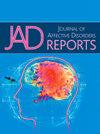改进自杀意念的描述性报告:对综合指标的呼吁
Q3 Psychology
引用次数: 0
摘要
自杀意念是自杀预防研究中一个重要的危险因素和干预目标,但其描述性报道仍不一致。大多数研究报告的是患病率或平均得分,往往忽略了条件均值,即那些有自杀念头的人的平均得分。这限制了我们在受影响人群中评估思想真正严重程度的能力,并阻碍了交叉研究的可比性。我们提出了一种标准化的描述性报告方法,包括三个关键指标:总体平均值、条件平均值和患病率。这些指标对自杀意念的程度、严重程度和流行程度提供了更全面的了解。如果只有分类反应可用,我们建议报告患病率和反应类别的完整细分,以保持可解释性。采用这些标准将提高meta分析的准确性,使研究之间的比较更有意义,并支持有针对性的、基于证据的干预措施的发展。我们呼吁研究人员、期刊编辑和审稿人实施这一报告标准,以加强自杀预防工作的经验基础。本文章由计算机程序翻译,如有差异,请以英文原文为准。
Improving descriptive reporting of suicidal ideation: A call for comprehensive metrics
Suicidal ideation is a critical risk factor and intervention target in suicide prevention research, yet its descriptive reporting remains inconsistent. Most studies report prevalence rates or mean scores, often omitting the conditional mean, the average score specifically among those experiencing suicidal ideation. This limits our ability to assess the true severity of ideation in affected populations and hampers cross-study comparability. We propose a standardised approach to descriptive reporting incorporating three key metrics: overall mean, conditional mean, and prevalence rate. These metrics provide a more comprehensive picture of the extent, severity, and prevalence of suicidal ideation. Where only categorical responses are available, we recommend reporting both prevalence and the full breakdown of response categories to preserve interpretability. The adoption of these standards would improve the precision of meta-analyses, enable more meaningful comparisons across studies, and support the development of targeted, evidence-based interventions. We call on researchers, journal editors, and reviewers to implement this reporting standard to strengthen the empirical foundation of suicide prevention efforts.
求助全文
通过发布文献求助,成功后即可免费获取论文全文。
去求助
来源期刊

Journal of Affective Disorders Reports
Psychology-Clinical Psychology
CiteScore
3.80
自引率
0.00%
发文量
137
审稿时长
134 days
 求助内容:
求助内容: 应助结果提醒方式:
应助结果提醒方式:


